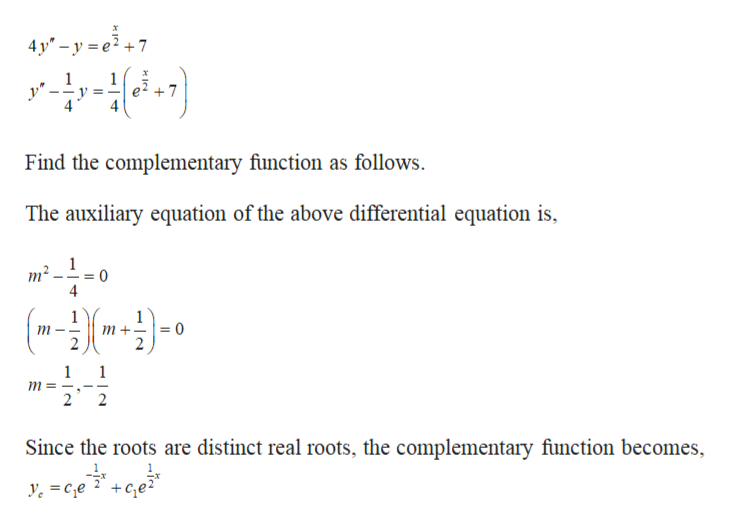

#Differential equation calculator with steps series#
A series is convergent if the sequence converges to some limit, while a sequence that does not converge is divergent. Sequences have many applications in various mathematical disciplines due to their properties of convergence. There are many different types of number sequences, three of the most common of which include arithmetic sequences, geometric sequences, and Fibonacci sequences. In a number sequence, the order of the sequence is important, and depending on the sequence, it is possible for the same terms to appear multiple times. The individual elements in a sequence is often referred to as term, and the number of terms in a sequence is called its length, which can be infinite. Accordingly, a number sequence is an ordered list of numbers that follow a particular pattern.

In mathematics, a sequence is an ordered list of objects. Other equation types to know are the biquadratic, rational, logarithmic, and absolute.Example: 1, 3, 5, 7, 9 11, 13. The key to solving equations is to identify the equation type. One more thing to note, by squaring the equation we changed the original equation, so it is very important to check the solutions at the end. To solve radical equations, you first have to get rid of the radicals, in the case of square roots square both sides of the equation (in some cases this should be done multiple times), then simplify the new equation (either linear or quadratic) and solve. Radical equations are equations involving radicals of any order. The logarithm property ln(a^x)=xln(a) makes this a fairly simple task. In all other cases, take the log of both sides (this might require some manipulation) and solve for the variable.If the exponents on both sides of the equation have the same base, you can use the fact that: If a^x=a^y then x=y.

Solving exponential equations is straightforward there are basically two techniques: The quadratic formula comes in handy, all you need to do is to plug in the coefficients and the constants (a,b and c). To make things simple, a general formula can be derived such that for a quadratic equation of the form ax²+bx+c=0 the solutions are x=(-b ± sqrt(b^2-4ac))/2a. Take the square root of each side and solve. Take half of the coefficient of the middle term(x), square it, and add that value to both sides of the equation. Move the constant term to the right hand side. Easy is good, so we basically want to force the quadratic equation into the form (x+a)²=x²+2ax+a².Īll it takes is making sure that the coefficient of the highest power (x²) is one. But what if the quadratic equation can’t be factored, you're going to need a different method to help you solve it, completing the square.Īn equation in which one side is a perfect square trinomial can be easily solved by taking the square root of each side. Solving quadratics by factorizing usually works just fine. How do you factorize a quadratic? The trick is to get the equation to the form (x-u)(x-v)=0, now we have to solve much simpler equations. There are multiple methods to solve quadratics: factorization, completing the square, and the quadratic formula.įirst up is factorization. Remember, whatever you do to one side of the equation, you must do the same to the other side.Ī quadratic equation is a second-degree polynomial having the general form ax²+bx+c=0, where a, b, and c are constants. You do this by adding, subtracting, multiplying or dividing both sides of the equation. The trick here to solving the equation is to end up with x on one side of the equation and a number on the other. You have an equation with one unknown - call it x. Solving equations involves finding the unknowns in the equation.


 0 kommentar(er)
0 kommentar(er)
